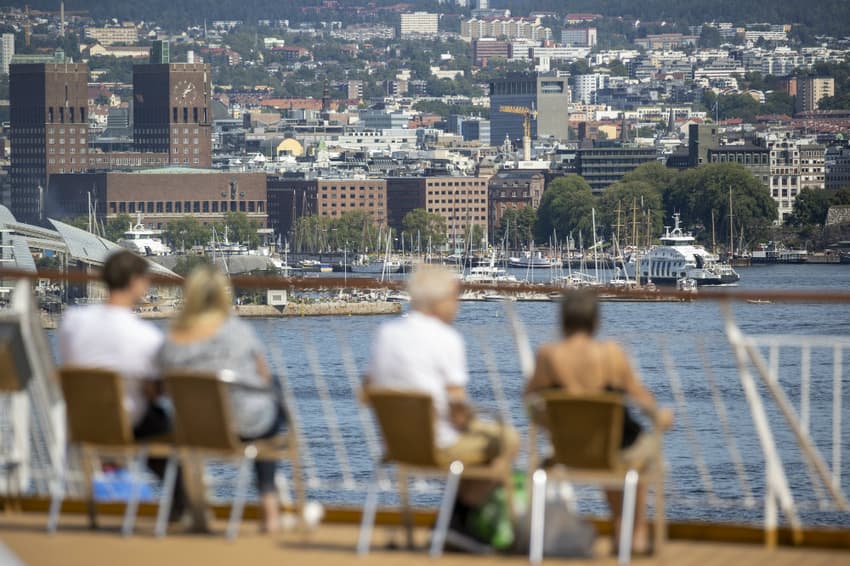How Norway reduced new Covid-19 infections amongst over-90s to zero

Nobody over the age of 90 in Norway has tested positive for coronavirus during the last month.
Good routines at care homes in the country could be an important factor in the positive statistic, newspaper VG reports.
On June 24th, 125 people over the age of 90 were registered as having tested positive for Covid-19. The figure is the same one month later, according to Norwegian Institute of Public Health (NIPH) figures.
“There have been fewer cases in all age groups including the oldest. Less virus spread in general will also result in fewer elderly people being infected,” Tone Bruun, NIPH’s consultant doctor for infectious disease prevention and vaccines, told VG.
Bruun noted that the chance of the virus entering a care home is lower when few staff and visitors are infected.
But other factors may also have played a part in keeping the virus away from over-90s.
“There is also better tracking, testing, tracing, isolation and quarantine so that the virus is stopped from spreading in time. Better routines at many care homes can be a contributing factor,” she said.
Recent weeks have seen Norway begin to allow leisure travel to many European countries, although Friday saw restrictions reintroduced for travellers from Spain.
New data from NIPH shows that the proportion of Norwegian coronavirus cases who were infected abroad increased from 11 in the week commencing July 6th to 29 in the subsequent week, VG reported last week.
Of these, almost all infection were registered as taking place in a “red country” – a country to which the Norwegian foreign ministry advises against non-essential travel. One infection was registered in a “green” country.
READ ALSO: Norway updates travel rules: Spain classed as 'red' but more of Sweden opens up
“Recommendations on quarantine, testing and other follow-up ensure that these cases have less chance of further spread, including in care homes and the rest of the health service,” Bruun said.
Regarding predictions that Norway could experience a second wave of infections in the autumn, Bruun told VG this was a possibility.
“Sporadic increases in cases can be expected through the late summer and autumn in connection with local outbreaks and clusters. Increased travel activity looks to be giving some increased import during the summer. There may also be a new national wave in the autumn or winter, when people will stay indoors more again,” the expert said.
“To limit such an outbreak, it remains important for us to follow general virus safety guidelines and stay home when we are sick, have good hygiene and stay distance from everyone other than our loved ones,” she said.
Comments
See Also
Good routines at care homes in the country could be an important factor in the positive statistic, newspaper VG reports.
On June 24th, 125 people over the age of 90 were registered as having tested positive for Covid-19. The figure is the same one month later, according to Norwegian Institute of Public Health (NIPH) figures.
“There have been fewer cases in all age groups including the oldest. Less virus spread in general will also result in fewer elderly people being infected,” Tone Bruun, NIPH’s consultant doctor for infectious disease prevention and vaccines, told VG.
Bruun noted that the chance of the virus entering a care home is lower when few staff and visitors are infected.
But other factors may also have played a part in keeping the virus away from over-90s.
“There is also better tracking, testing, tracing, isolation and quarantine so that the virus is stopped from spreading in time. Better routines at many care homes can be a contributing factor,” she said.
Recent weeks have seen Norway begin to allow leisure travel to many European countries, although Friday saw restrictions reintroduced for travellers from Spain.
New data from NIPH shows that the proportion of Norwegian coronavirus cases who were infected abroad increased from 11 in the week commencing July 6th to 29 in the subsequent week, VG reported last week.
Of these, almost all infection were registered as taking place in a “red country” – a country to which the Norwegian foreign ministry advises against non-essential travel. One infection was registered in a “green” country.
READ ALSO: Norway updates travel rules: Spain classed as 'red' but more of Sweden opens up
“Recommendations on quarantine, testing and other follow-up ensure that these cases have less chance of further spread, including in care homes and the rest of the health service,” Bruun said.
Regarding predictions that Norway could experience a second wave of infections in the autumn, Bruun told VG this was a possibility.
“Sporadic increases in cases can be expected through the late summer and autumn in connection with local outbreaks and clusters. Increased travel activity looks to be giving some increased import during the summer. There may also be a new national wave in the autumn or winter, when people will stay indoors more again,” the expert said.
“To limit such an outbreak, it remains important for us to follow general virus safety guidelines and stay home when we are sick, have good hygiene and stay distance from everyone other than our loved ones,” she said.
Join the conversation in our comments section below. Share your own views and experience and if you have a question or suggestion for our journalists then email us at [email protected].
Please keep comments civil, constructive and on topic – and make sure to read our terms of use before getting involved.
Please log in here to leave a comment.